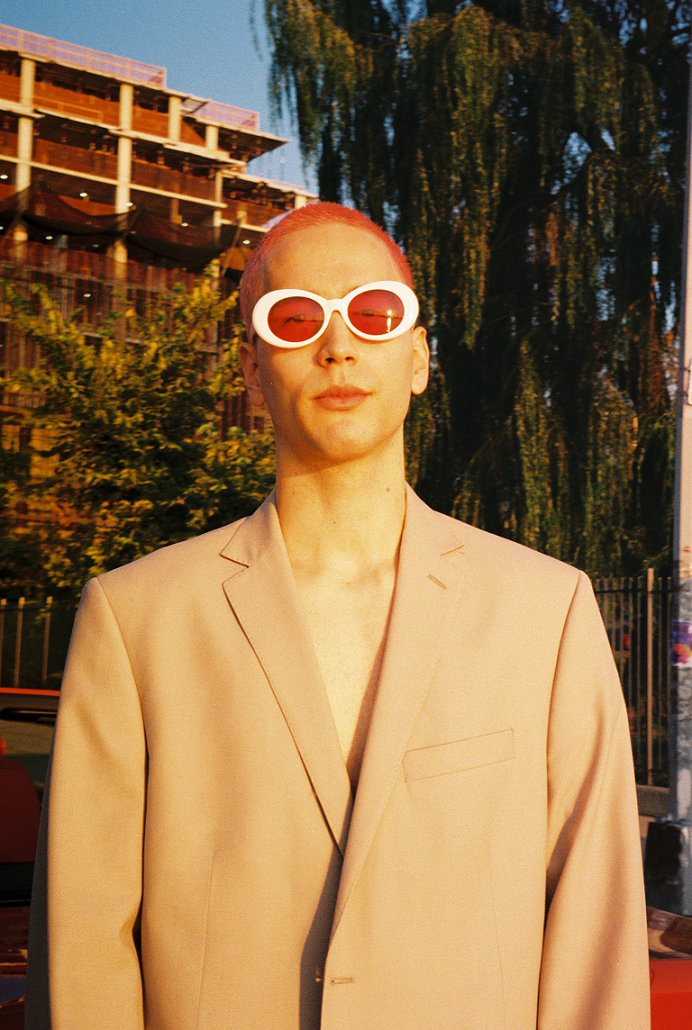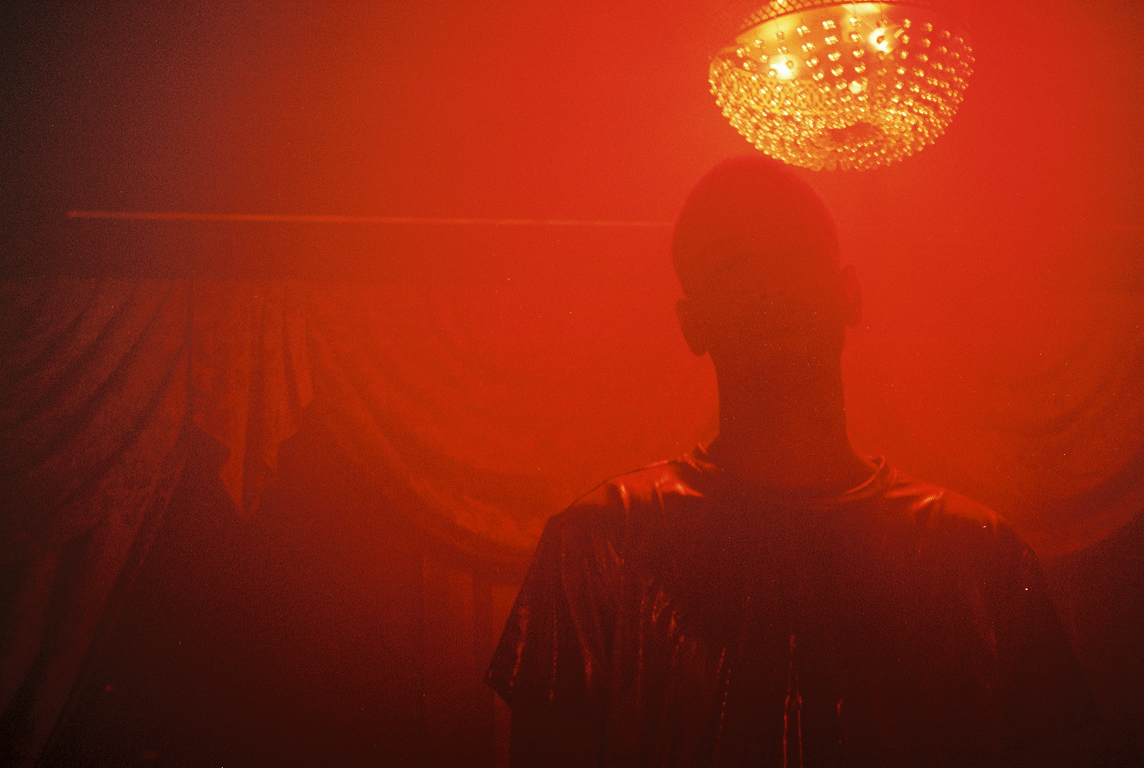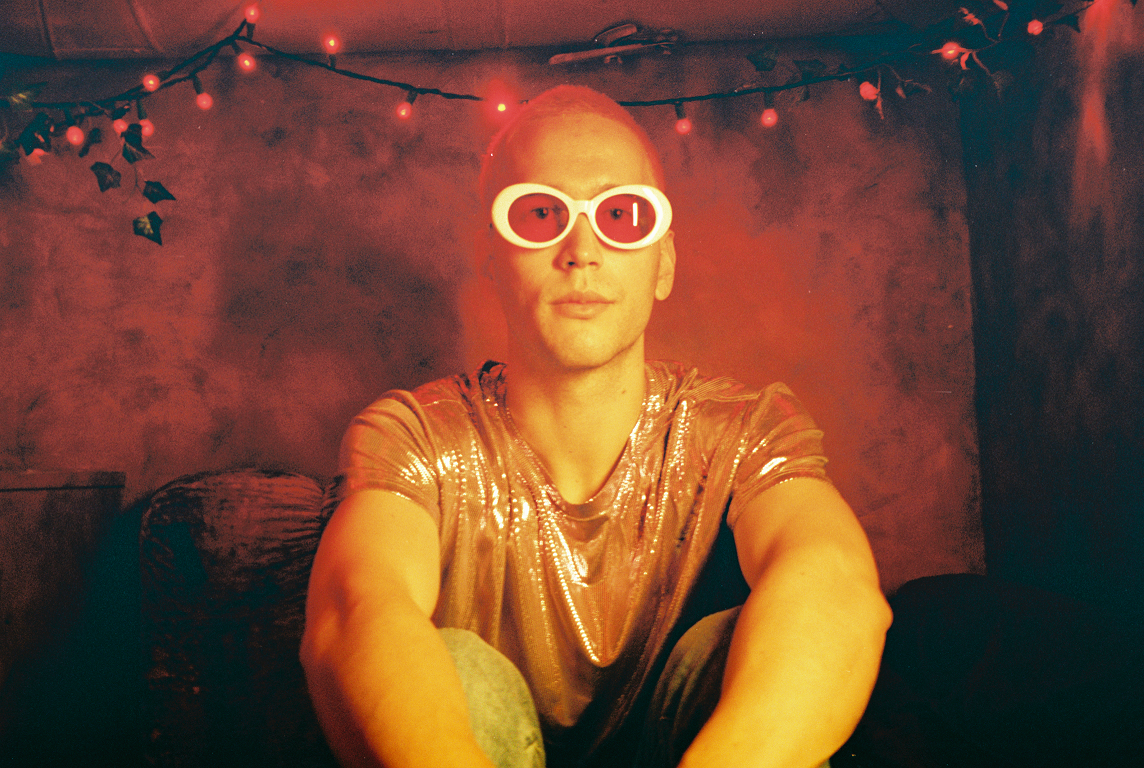Rei Brown Is Obsessed With Using Tissues Instead Of Drums
His latest single “Forever” is a verifiably fun romp through pop-cheesiness turned serious project.

It is ultimately the metallic ping of my computer that lets me know Rei Brown has logged onto Zoom and is ready to begin chatting. This is how interviews are conducted these days. They have been for so many months that I’m starting to forget what it felt like to actually race over to a hotel room, meet an artist and their team, before ultimately having to turn down alcoholic beverages while desperately trying to get your phone to start recording the conversation.
Perhaps this is easier. When I meet Brown (through my laptop and his phone) he’s holed himself and his friends up in a dome-shaped Airbnb. They’re somewhere outside of New York City, coincidentally just in time to miss the post-election celebrations that had everyone dancing and banging pots in the streets. He swears it wasn’t on purpose.
I watch his bright blue buzz cut bob around on the screen as he searches the dome for a quiet corner to sit down in. Brown is well known, increasingly so, as a lo-fi internet musician, one of the many who began by posting on Soundcloud back when that was the way to kickstart a career.

Yesterday, before the interview, his PR rep informed me that Brown draws inspiration for his music from architecture, among other things, which I find unusual for a musician. But Brown is well acquainted with the physical structure of cities, having lived in so many. Originally from Kobe, Japan, he then moved across the globe to attend the Berklee College of Music in Boston (because, he tells me, that’s what John Mayer did). Eventually, he decided to become a New Yorker, as many musicians do.
“Architecture, we think of it as buildings, but it’s really just how we engage with spaces, which are everywhere,” says Brown. “Looking back at my childhood, I grew up in a lot of weird spaces just by chance. I don’t know if you’re familiar with Tadao Ando, he’s this Japanese architect?”
I tell him I’m not.
“He was really huge in the architecture world or especially in Japan. I knew of him, especially in college and afterward, but then going through his old stuff, like a list of all his works, I found out he had designed a bunch of stuff in my neighborhood. Without knowing it, I kind of grew up moving through these spaces that he had designed.”
When he explains it, the connection between buildings and songs begins to take shape, because isn’t music just a space that we enter, not on foot, but by listening and imagining? Among his other inspirations, Brown lists the descriptive writing of Haruki Murakami, and “older generation” artists like Flying Lotus, Shlomo, or Amon Tobin.
“I remember early on at Berkeley, I was listening to a Shlomo song and he was using white noise,” says Brown. “I found out later he was recording a tissue rubbing over his laptop microphone. He was using it the same way as like jazz brush drums. It was just a whole other way to think like, ‘Oh, it doesn’t have to be music or musical. All sound can be music.’ Does that make sense?”
It does, to me at least.
“It was just realizing fidelity is a construct and anything is music, anything can sound good [when] embracing a wide variety of textures.”

It’s clear that Brown is comfortable stepping outside the usual trappings of production to make music, but I wonder where it is he picked up the idea to do so. Berklee, while known for birthing a wide range of talented individuals, doesn’t strike me as a breeding ground for experimental and underground technique.
“There were a lot of jazz musicians and whatnot [at Berklee]. I remember being in a class and playing a Jai Paul song, who I thought was crazy and really groundbreaking, and this rock guitarist in the class was like, ‘This is really weird.’ He just couldn’t understand,” says Brown. “I was so surprised that, being at a music school, people would think anything was weird…There were a lot of, I call them ‘music jocks’ who are just always practicing, getting really good technical skills and flexing that on everyone, but weren’t as open-minded.”
The desire to be around a broader variety of people is part of what inspired Brown to move down the East Coast to New York.
“I’m biracial, so growing up in Japan, I always stuck out. I think New York is a really nice place where it’s so diverse that I don’t stick out and that was always something that bothered me growing up.”
I wonder aloud whether Brown has gotten involved in the NYC music scene. We’re known for being home to a nearly excessive number of venues, all churning out music and cheers late into the night. Brown is adamant that he’s stayed committed to digital music culture, rather than any local scene in particular, a holdover perhaps from his Soundcloud days.
“I think like once a month, I’ll do a deep dive on SoundCloud and still find really cool hidden gems. I think that’s really important.”

He claims he doesn’t regularly go to any big parties or clubs either. The preference for online interaction and a low-key lifestyle has likely helped Brown adjust to the current circumstances of quarantine. Once he found his work-from-home stride, he got back to making music, saying the last few months, in particular, have been really good for him.
In fact, he’s set to release his latest single, “Forever,” the 12th of November. It’s a collaboration with friends, and notable musicians in their own right, Joji and Keshi.
“Joji and I are actually just childhood friends. We just grew up together. We were just hanging out when we first started writing [‘Forever’]. We had this guitar lying around and an amp plugged in. We were like, let’s write some cheesy pop stuff and then ended up really liking what we came up with.”
After starting the writing for “Forever” back in 2017, Brown held onto the track until his interest in the project was picked back up by Keshi.
“I was hanging out with him at his hotel room and was just like, ‘Oh, I have this song I started with Joji. Would you be interested in hearing it?’ He heard it and he had his guitar and he started singing the hook back and it sounded really refreshing to hear someone else sing it to me. That kind of re-invigorated or reignited that flame.”
“Forever” comes off the heels of singles “Honest,” “Islands,” and “Bubble.” It’s enough to make you think Brown might be gearing up for a bigger release come the start of next year.
“I don’t want to promise an album, but yeah, I’m sitting on a lot of stuff and just excited to roll it out,” he explains. “Obviously the pandemic and everything was a lot of wrenches thrown into the gears, don’t know if that’s the saying, but everyone’s plans were kind of hitting the ceiling. I was just in single mode for a while, and now the year’s wrapping up and I felt really good about ending it with ‘Forever’ and this music video.”
Come what may, “Forever” is a verifiably fun romp through pop-cheesiness turned serious project, and the video shows Brown getting back to his DIY roots with nothing more than a camcorder and a few arthouse filters. Keep an eye on this rising musician whose unique perspective is sure to take him far.
Discover More
